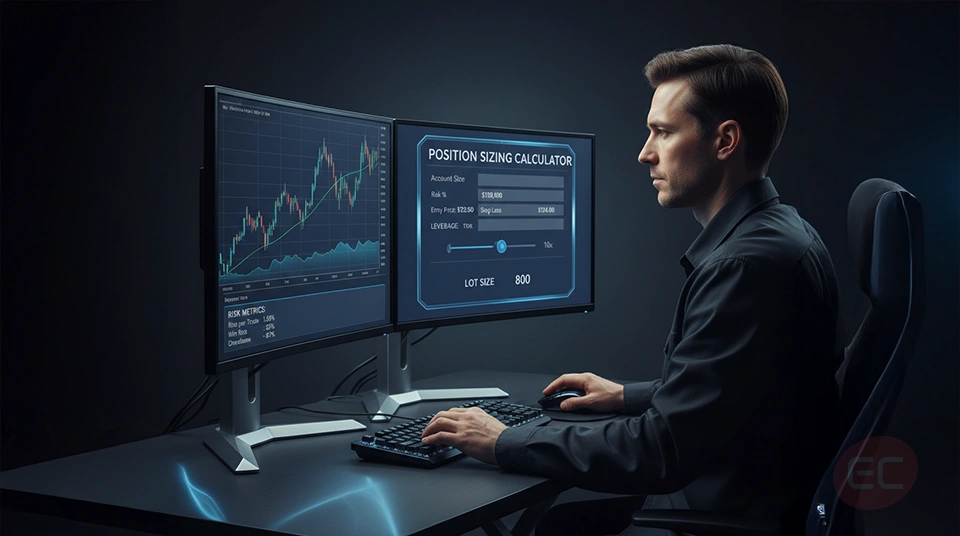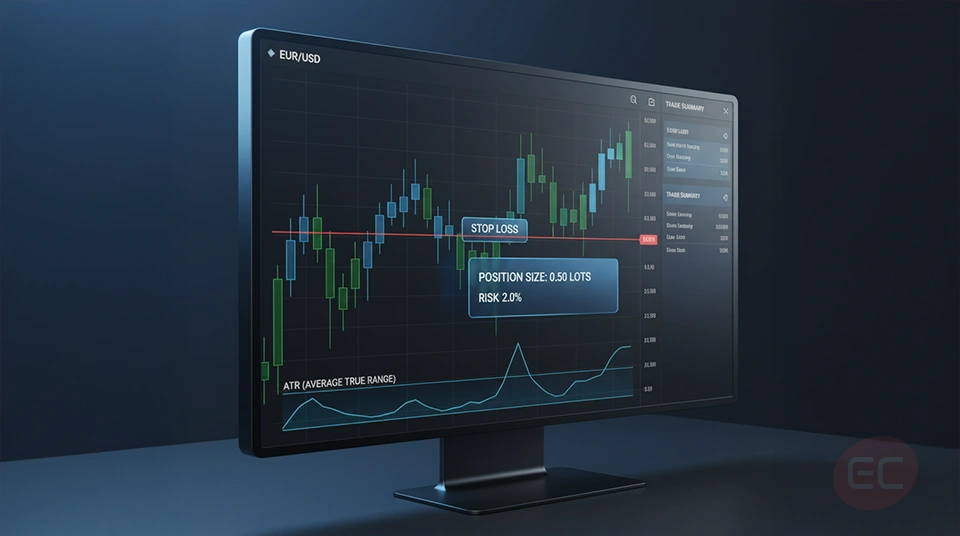Advanced Risk Management Techniques: Mastering the Art of Managing Trading Risks
So you've learnt the basics, you've entered a few trades, and you're gaining confidence. But here’s the truth: profits don’t come from predictions, they come from protection, in other words, risk management. But what is risk management and how is it different in professional trading compared to casual retail trading? In this course, we are going to take an in depth look into forex risk management techniques so you can start protecting your capital like a professional trader and stop losing money due to avoidable mistakes by effectively managing trading risks.

What is Risk Management?
Before we dive into the advanced tools, let’s first answer the most important question: what is risk management in trading? In simple terms, risk management is the process of identifying, and controlling potential losses when it comes to trading. It’s essentially what keeps your account alive through losing streaks, moments of high market volatility, and unexpected news. A strong risk framework also ensures that you’re consistently managing trading risks even when market conditions become unpredictable. But it’s not just a set of rules, forex risk management and stock risk control require mindset and discipline as well.
So if you're not actively managing trading risks, you're actually exposing yourself to preventable failure, and that’s why professional traders always say: “focus on not losing money, and in time, the profits will follow.”
Why is Advanced Risk Management so important?
Most beginners will usually focus on entries and setups, but what separates the pros from the amateurs? It really lies in their understanding and their execution of risk management techniques. Understanding what is forex risk management on a deeper level gives traders the foundation to build consistent, rules-based systems that survive the emotional ups and downs of the market. So when you’re creating a risk management strategy for yourself, ask yourself these questions:
- Do I have a consistent position sizing method?
- Do I know how much of my portfolio I’m risking on each trade?
- Can my trading system survive 10 losses in a row?
If you hesitated in answering those questions, it’s probably time to sharpen your skills in forex risk management.
1) Dynamic Position Sizing
Static position sizing (for example risking 1% on every trade) is common, yes, but advanced traders will use dynamic position sizing to improve their results.
Let’s take a look at how it works:
- For high probability trades: you can risk slightly more (e.g., 1.5%)
- For lower confidence setups: you should risk less (e.g., 0.5%)
By tailoring your risk to set up quality, you're actually managing trading risks based on logic and not based on emotion. And this principle applies across all asset classes, especially in forex risk management, where market volatility can vary day to day.
2) Using Risk Reward Ratios with precision
We’ve looked at risk-reward ratios in EC Academy, but are you actually applying them with real discipline? One of the most under-utilised risk management techniques is only taking trades with a minimum 2:1 reward to risk ratio. What does that mean exactly? Well, it means you stand to make $2 for every $1 you risk, and over time, even with a 40% win rate, you can be profitable, if your losses are small and controlled.
3) Volatility-based Stops
Ask yourself, are you using the same stop size for every trade you do? Chances are you’re setting yourself up for random results. One of the smarter risk management techniques is setting stop losses based on market volatility. For example, in a highly volatile pair like GBP/JPY, a 15-pip stop might get hit easily, but in a slow moving pair like EUR/CHF, that same stop may be excessive.
So Forex risk management becomes more refined when you match stop sizes to Average True Range (ATR) or daily volatility levels, this in turn reduces the chance of getting stopped out too early, or even too late. This approach reflects a practical application of what is risk management in dynamic market environments where it is important to adapt your methods to volatility rather than using a one-size-fits-all stop.
4) Risk Scaling
Are you always exiting 100% of your trade at one target? If you are, you might be leaving a powerful risk management technique on the table: scaling out. Scaling out involves taking partial profits at the first target and letting the rest run with a trailing stop.
This reduces risk mid trade and it ensures that you’re managing trading risks as price moves in your favor. Traders who use scaling correctly actually tend to be more consistent, especially in forex risk management.
5) Correlation Risk
If you think you’re diversifying by opening multiple trades, you might want to think again. A lot of traders will unknowingly overexpose themselves by trading assets that move together, like EUR/USD and GBP/USD. This creates hidden risk, because if the dollar strengthens, both trades could lose simultaneously.
One of the more advanced risk management techniques involves checking asset correlations and limiting simultaneous trades in highly correlated pairs.
6) Stop trading after a streak
Losses aren’t just financial, they’re also affecting your psychology, and a smart risk management technique is to pause after a certain number of losing trades. So let’s say if you lose 3 days a day, stop. If you lose 5 in a week, maybe take a break and review afterwards.
Why is it so important to take a break? Because like anything overworked, mental fatigue can increase trading errors and managing trading risks includes managing yourself.

Conclusion: What is Risk Management? Exploring Advanced Risk Management Techniques
Before you can truly master advanced techniques, it’s essential to fully grasp what is risk management and why it forms the backbone of every successful trading strategy. A strategy is only as strong as your ability to follow it and advanced risk management techniques aren’t helpful unless you apply them correctly. No matter your experience level, success ultimately depends on how well you’re managing trading risks day after day, trade after trade. In this course, we covered some of the most important advanced risk management techniques that can protect you from making serious mistakes and therefore, losses. Let’s take a look at what we’ve learnt so far:
- Dynamic position sizing
- Volatility-based stops
- Scaling out of positions
- Risk-reward ratio discipline
- Correlation awareness
- Drawdown limits
If you want to succeed long term, you need to understand what is risk management, practice it daily and adapt as the markets evolve.
We hope you enjoyed this course on advanced risk management techniques! If you’re serious about trading, then following these techniques is crucial to your long term trading success!
Are you ready for the next course? Then keep on reading EC Academy as we unlock plenty of new trading topics that every new trader needs to know! See you at the next course!